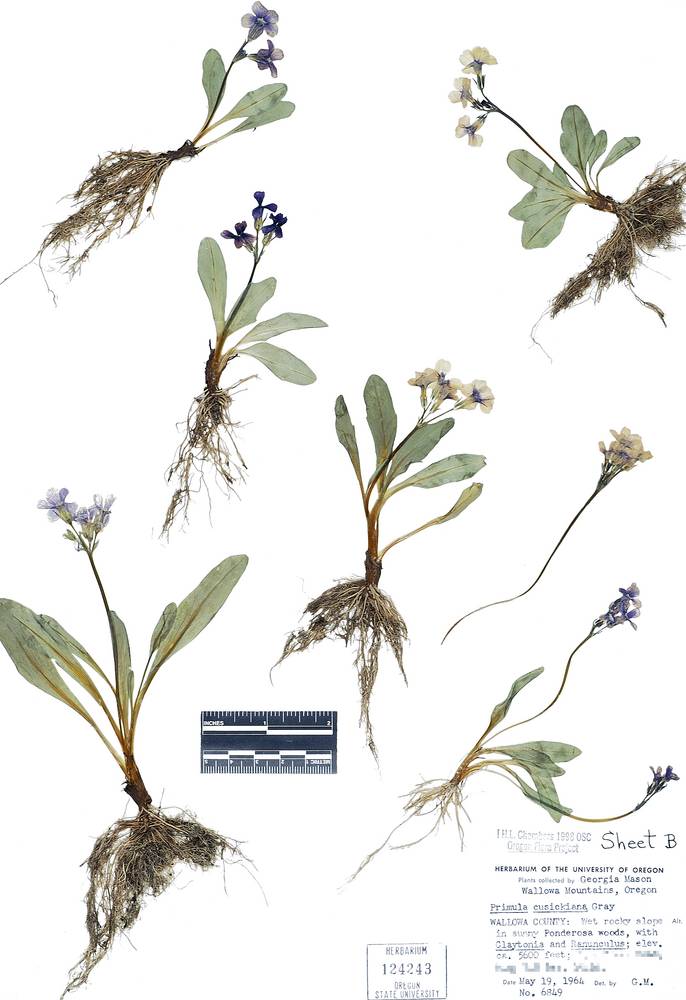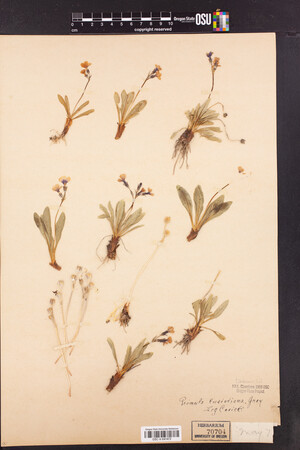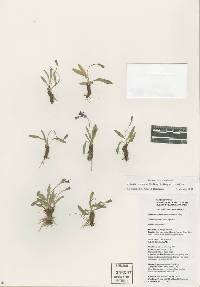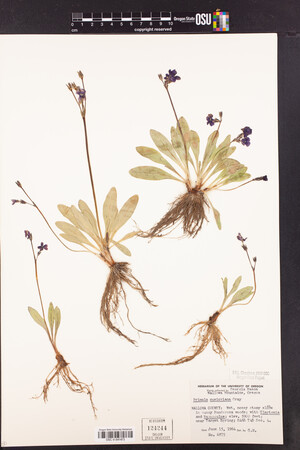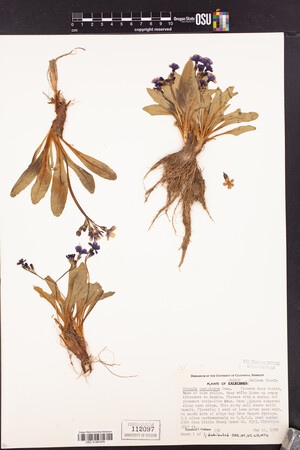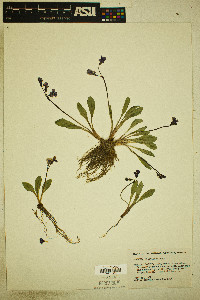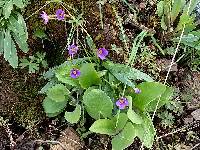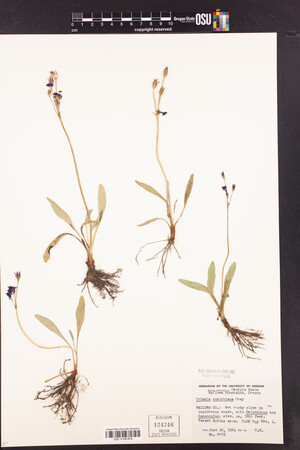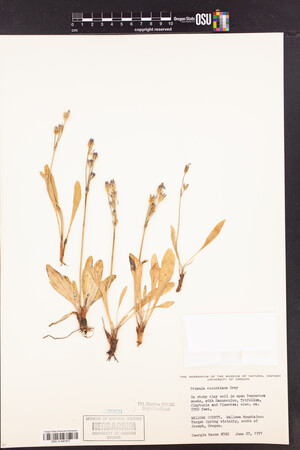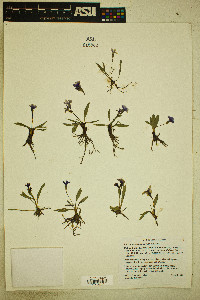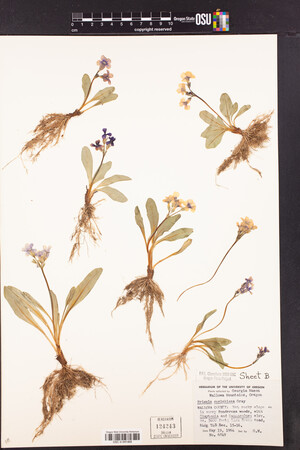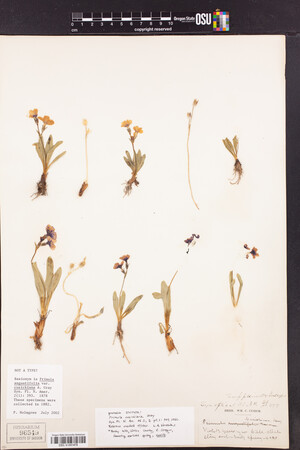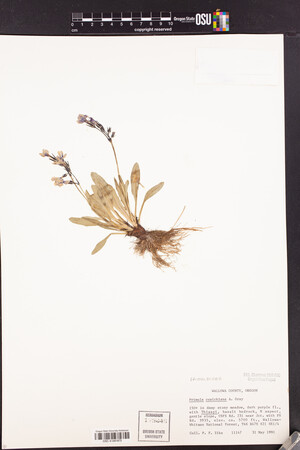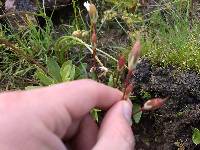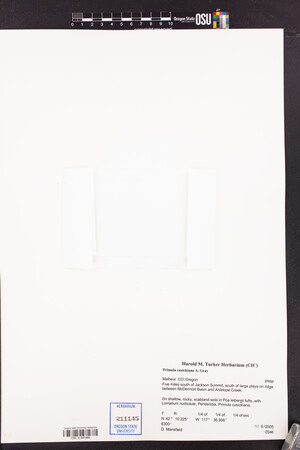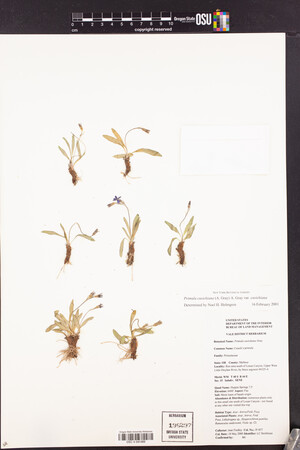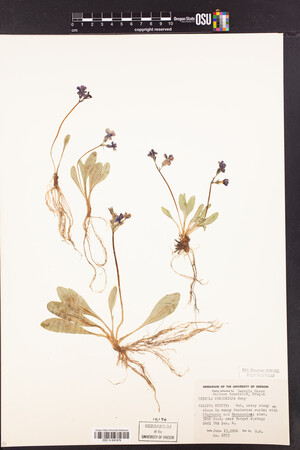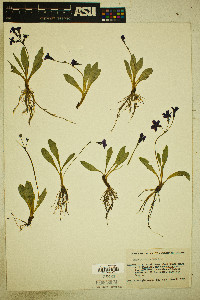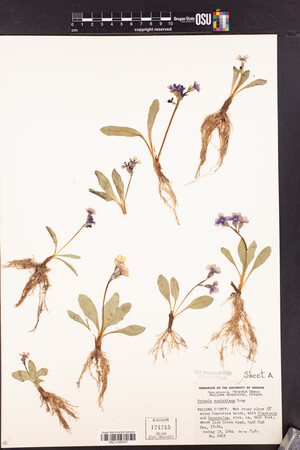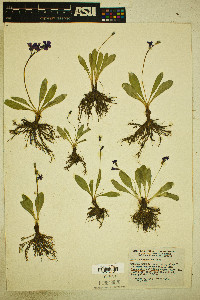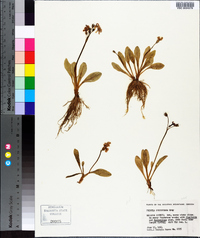
|
|
|
|
Family: Primulaceae
Wallowa Primrose
[Primula cusickiana var. cusickiana (A. Gray) A. Gray] |
Plants (3-)5-10 cm, herbaceous; rhizomes short, stout; rosettes not clumped; vegetative parts only slightly farinose on calyx. Leaves not aromatic, indistinctly petiolate; petiole winged; blade without deep reticulate veins abaxially, lanceolate to spatulate, 1-4 × 0.3-1.8(-2.3) cm, thick, margins almost entire or somewhat dentate, apex obtuse or acute, surfaces glabrous. Inflorescences 2-8-flowered; involucral bracts plane, unequal. Pedicels erect to arcuate, thin, 2-25(-35) mm, length ca. 1-2 times bracts, flexuous. Flowers heterostylous; calyx green, sometimes with farinose stripes on ridges, narrowly campanulate, 5-11 mm; corolla rose to magenta-violet, tube 7-14 mm, length 1-2 times calyx, glandular or eglandular, limb to 10-25 mm diam., lobes 5-10 mm, apex emarginate. Capsules ovoid, length 1 times calyx. Seeds unknown. Throughout the Great Basin and Intermountain Region, Primula cusickiana exhibits local variation. With the exception of P. capillaris, the members of the P. cusickiana complex are treated as varieties distinguished somewhat arbitrarily by morphological differences; geographic distribution and ecology also separate them. Genetic studies using nuclear ITS and ETS sequences, cpDNA and AFLPs (S. Kelso et al. unpubl.; A. R. Mast et al. 2004) support the close relationships in this clade and to P. capillaris. This infraspecific taxonomic recognition does not diminish their biological importance as isolated endemics almost certainly relictual from the last Ice Age and now restricted to diminishing alpine habitat islands of the Intermountain Region. Given their limited distributions and habitat, which is often threatened by climatic or anthropogenic factors, all representatives of this complex should be considered of conservation concern.
Plants glabrous except for white farina on involucral bracts and calyces. Leaves shorter than scape; blade narrowly to broadly lanceolate or almost oblong, margins subentire. Corolla tubes ca. 10 mm, length 1-1.5 times calyx. Flowering spring or summer. Moist swales of sagebrush-grass communities; 700-1800 m; Idaho, Nev., Oreg. Variety cusickiana varies in morphology and habitat. Individuals from Oregon and Idaho have narrowly lanceolate to almost oblong leaf blades, usually with little dentation. Scapes begin flowering when short and elongate throughout anthesis to overtop the basal rosette of leaves. Degree of available moisture appears to affect vegetative morphology in this variety, with consistently moist sites containing more robust individuals than habitats with ephemeral moisture. Number of flowers is similarly affected. This phenotypic plasticity has resulted in additional names suggested for both Oregon and Idaho populations, none yet supported by clear genetic or ecological distinction.
|
This project was made possible in part by the Institute of Museum and Library Services [MG-70-19-0057-19].
Powered by Symbiota

